This article was co-authored by Siddharth Tambar, MD and by wikiHow staff writer, Danielle Blinka, MA, MPA. Dr. Siddharth Tambar, MD is a board certified rheumatologist at Chicago Arthritis and Regenerative Medicine in Chicago, Illinois. With over 19 years of experience, Dr. Tambar specializes in Regenerative Medicine and Rheumatology, with a focus on platelet rich plasma and bone marrow derived stem cell treatments for arthritis, tendinitis, injuries, and back pain. Dr. Tambar holds a BA in Economics from State University of New York at Buffalo. He earned his MD from State University of New York at Syracuse. He completed his Internship, Residency in Internal Medicine, and his Rheumatology Fellowship at Northwestern Memorial Hospital. Dr Tambar is board certified in both rheumatology and internal medicine. He also holds Musculoskeletal Ultrasound Diagnostic and Interventional certifications from the American College of Rheumatology and the American Institute of Ultrasound in Medicine.
This article has been viewed 39,079 times.
If you've been experiencing pain, stiffness, and swelling in your wrist, then you may have wrist tendonitis. While you may think of it as a sports injury, wrist tendonitis can be caused by any activity that causes you to overuse your wrist, including your job or hobby. If you suspect you have wrist tendonitis, you can care for it at home by resting, icing, wrapping, and elevating your wrist. If your pain persists, you can try professional treatments or physical therapy exercises to treat your wrist tendonitis.
Steps
Managing Tendonitis at Home
-
1Stop the activity that is causing overuse.[1] While tendonitis can result from an injury or improper technique, it is most often due to repetitive use. If you want your wrist to heal, you must stop the activity that caused the damage.[2]
- If you don’t rest your tendonitis, it will only get worse.
- If you aren’t sure what caused your tendonitis, go through your day and think about the activities you do that involve your wrist. For athletes, your sport may be the most obvious culprit. However, many people have jobs that cause tendonitis, such as factory workers. You may even have a hobby like crochet that has you repetitively moving your wrist.
-
2Rest your wrist. Don’t do any activity that causes pain or swelling in your wrist, and avoid activities that require a lot of wrist use.[3] Resting will give your body a chance to repair itself and heal.[4]
- Using your wrist is necessary for many daily activities, so resting it will be hard. Remind yourself that it’s necessary in order to heal.
Advertisement -
3Apply ice to your wrist to reduce pain and swelling. Ice will decrease the inflammation in your body caused by the injury. Before you apply the ice, wrap it in a towel to protect your skin from the cold. Use your ice treatment for up to 20 minutes several times a day for a few days as your wrist recovers.[5]
- Alternatively, you could try using an ice bath. Simply fill a large bowl or pot with water and ice. The temperature of the ice water should be at about 60 degrees. Submerge your wrist for 6 to 8 minutes.[6]
-
4Use a compression wrap to minimize swelling. Start wrapping the elastic wrap starting at your hand and working toward your elbow. Stretch the wrap to pull it partially taut as you wrap your wrist, with each wrap overlapping 50% of the last wrap to make it tight. When you reach your elbow, reverse direction and continue wrapping back toward your hand.[7]
- If your fingers tingle, feel numb or warm, swell, or change colors, the wrap is too tight.
- Take your wrap off while you sleep.
- A compression wrap can also help you keep your wrist stationary by limiting movement.
- You can find a compression wrap or bandage at most drug stores.
-
5Elevate your wrist as often as possible. Elevation will help reduce swelling, which allows your wrist to heal faster. Try propping up your wrist on a pillow or the armrest of your chair.[8]
-
6Take over-the-counter NSAIDs for pain relief and to reduce swelling. Great options include Advil, ibuprofen, Motrin, Aleve, and naproxen. These medicines are readily available and can help reduce inflammation and pain.[9]
- Before taking any over-the-counter medicine, talk to your doctor if you are taking any other medications.
- You can also find over-the-counter creams and gels that are formulated for sports injuries, which can help you cope with pain and swelling.
Visiting a Medical Professional
-
1See your doctor if the pain persists or worsens. Your doctor can provide more intense treatments for tendonitis, which could help prevent it from worsening.[10] Give your doctor a detailed history of your symptoms, how long they’ve persisted, what you believe is causing the tendonitis, and what you’ve done to address your tendonitis.
-
2Try physical therapy. Physical therapy can help you target the muscles in your wrist, stretching and strengthening them.[11] This helps you reduce inflammation, which can help you manage the tendonitis long-term.[12] Physical therapy is very effective for treating wrist tendonitis. Your physical therapist can teach you how to handle your injury, including:
- Pain management techniques.
- Stretches.
- How to massage your wrist.
- Range-of-motion exercises.
- How to best perform activities without causing further damage.
-
3Talk to your doctor about corticosteroids. When injected near your tendon, a corticosteroid can reduce the inflammation around the area, alleviating most of the pain as well.
- Corticosteroids are best for acute cases. They aren’t recommended for chronic tendonitis, which lasts over three months.[13]
-
4Ask your doctor about platelet-rich plasma treatment. Your doctor may be able to treat your tendonitis using your own plasma. A sample of your blood would be spun to isolate the plasma, which would then be injected into the area around your tendon.[14] Plasma contains your platelets and other healing factors in the blood.
- While it’s still new, this treatment can be used for chronic tendonitis.[15]
-
5Discuss surgical options with your doctor if nothing else helps. If your tendon has torn away from the bone, surgery may be necessary to repair the damage. You may also be able to get a simple, non-invasive surgery called focused aspiration of scar tissue (FAST), which removes scar tissue that has built up over your wrist.
- With FAST, you could have use of your wrist back within 1 to 2 months.[16]
Doing Physical Therapy
-
1Consult a doctor before exercising your wrist. Physical therapy stretches, which you can try on your own, can help strengthen your wrist. However, doing these exercises will use your wrist joint, so it can harm your wrist if you do them without first talking your doctor.
-
2Extend and flex your wrist. Rest your forearm on a table with a rolled up towel under it. Allow your hand to drape over the side of the table with the palm down. Flex your hand up until you feel a slight stretch. Hold for 5 to 10 seconds, then return to the starting position.
- Do 10 repetitions of the stretch. For best results, repeat 3 times per day.
- You can also do this exercise with your forearm twisted so that your thumb is facing up, similar to a “shaking hands” position. Flex your wrist from this angle, holding the stretch for 5 to 10 seconds.[17]
- You can also deepen the stretch by using your free hand to gently pull back on the fingertips of your stretching hand.
-
3Perform wrist rotations. You can stand or sit while performing wrist rotations. Let your arm hang to your side. Bend your elbow at a 90 degree angle, with your palm facing down. Rotate your forearm so that your palm faces up. Hold for 5 to 10 seconds, then rotate back to palm facing down.[18]
- Repeat the stretch 10 times. For best results, do the exercise 3 times per day.
-
4Try wrist side bends. Wrist side bends are an easy stretch. Simply sit with your forearm resting on the table with the towel there to provide cushioning. Allow your wrist to drape over the side, but hold your hand parallel to your forearm. Shift your hand sideways to the left and hold for 5 seconds. Return to start, then shift your hand sideways to the right and hold for 5 seconds.https://www.health.harvard.edu/pain/5-exercises-to-improve-hand-mobility
- Do 10 repetitions of the stretch 3 times per day.
Expert Q&A
-
QuestionWhat causes tendonitis in the wrist?
 Siddharth Tambar, MDDr. Siddharth Tambar, MD is a board certified rheumatologist at Chicago Arthritis and Regenerative Medicine in Chicago, Illinois. With over 19 years of experience, Dr. Tambar specializes in Regenerative Medicine and Rheumatology, with a focus on platelet rich plasma and bone marrow derived stem cell treatments for arthritis, tendinitis, injuries, and back pain. Dr. Tambar holds a BA in Economics from State University of New York at Buffalo. He earned his MD from State University of New York at Syracuse. He completed his Internship, Residency in Internal Medicine, and his Rheumatology Fellowship at Northwestern Memorial Hospital. Dr Tambar is board certified in both rheumatology and internal medicine. He also holds Musculoskeletal Ultrasound Diagnostic and Interventional certifications from the American College of Rheumatology and the American Institute of Ultrasound in Medicine.
Siddharth Tambar, MDDr. Siddharth Tambar, MD is a board certified rheumatologist at Chicago Arthritis and Regenerative Medicine in Chicago, Illinois. With over 19 years of experience, Dr. Tambar specializes in Regenerative Medicine and Rheumatology, with a focus on platelet rich plasma and bone marrow derived stem cell treatments for arthritis, tendinitis, injuries, and back pain. Dr. Tambar holds a BA in Economics from State University of New York at Buffalo. He earned his MD from State University of New York at Syracuse. He completed his Internship, Residency in Internal Medicine, and his Rheumatology Fellowship at Northwestern Memorial Hospital. Dr Tambar is board certified in both rheumatology and internal medicine. He also holds Musculoskeletal Ultrasound Diagnostic and Interventional certifications from the American College of Rheumatology and the American Institute of Ultrasound in Medicine.
Board Certified Rheumatologist In most cases, repetitive motion in the joints will cause tendonitis. The good news is that tendonitis can be treated with rest, stretches, and medication.
In most cases, repetitive motion in the joints will cause tendonitis. The good news is that tendonitis can be treated with rest, stretches, and medication.
References
- ↑ Siddharth Tambar, MD. Board Certified Rheumatologist. Expert Interview. 25 August 2020.
- ↑ http://www.mayoclinic.org/diseases-conditions/tendinitis/basics/causes/con-20020309
- ↑ Siddharth Tambar, MD. Board Certified Rheumatologist. Expert Interview. 25 August 2020.
- ↑ http://www.mayoclinic.org/diseases-conditions/tendinitis/basics/lifestyle-home-remedies/con-20020309
- ↑ http://www.mayoclinic.org/diseases-conditions/tendinitis/basics/lifestyle-home-remedies/con-20020309
- ↑ https://www.active.com/triathlon/articles/8-ice-bath-dos-and-don-ts/slide-4
- ↑ http://www.mayoclinic.org/diseases-conditions/tendinitis/basics/lifestyle-home-remedies/con-20020309
- ↑ http://www.mayoclinic.org/diseases-conditions/tendinitis/basics/lifestyle-home-remedies/con-20020309
- ↑ http://www.mayoclinic.org/diseases-conditions/tendinitis/basics/lifestyle-home-remedies/con-20020309
- ↑ Siddharth Tambar, MD. Board Certified Rheumatologist. Expert Interview. 25 August 2020.
- ↑ Siddharth Tambar, MD. Board Certified Rheumatologist. Expert Interview. 25 August 2020.
- ↑ http://www.mayoclinic.org/diseases-conditions/tendinitis/basics/treatment/con-20020309
- ↑ http://www.mayoclinic.org/diseases-conditions/tendinitis/basics/treatment/con-20020309
- ↑ Siddharth Tambar, MD. Board Certified Rheumatologist. Expert Interview. 25 August 2020.
- ↑ http://www.mayoclinic.org/diseases-conditions/tendinitis/basics/treatment/con-20020309
- ↑ http://www.mayoclinic.org/diseases-conditions/tendinitis/basics/treatment/con-20020309
- ↑ https://www.health.harvard.edu/pain/5-exercises-to-improve-hand-mobility
- ↑ https://www.health.harvard.edu/pain/5-exercises-to-improve-hand-mobility


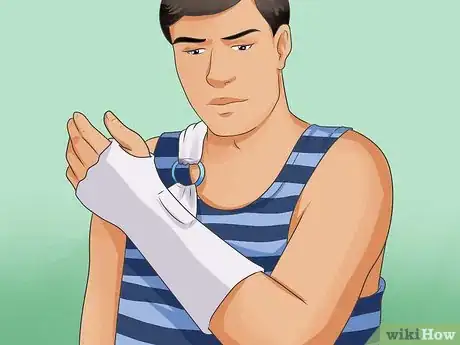
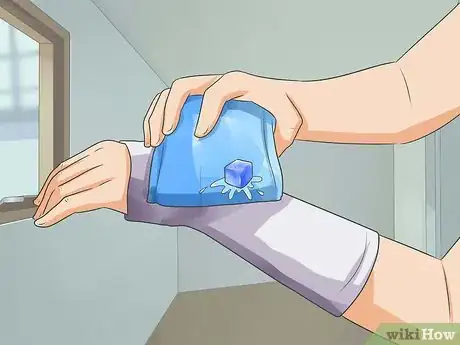
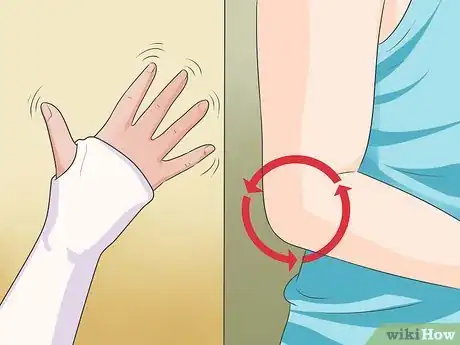
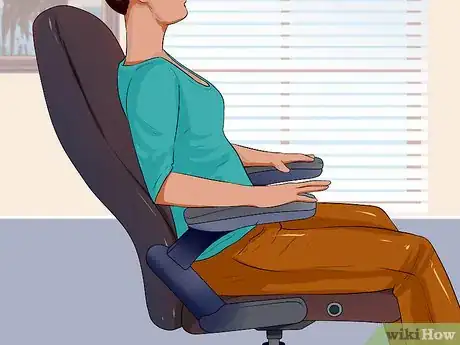
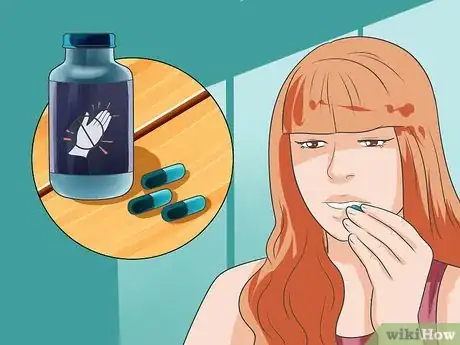
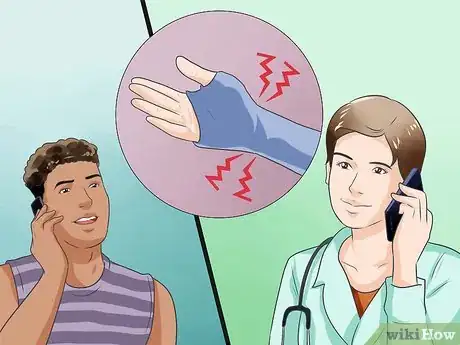
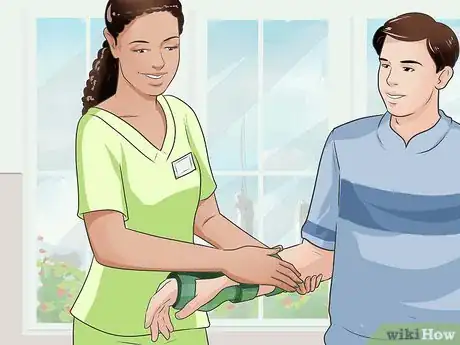

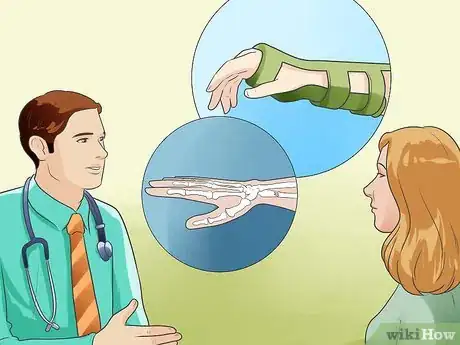


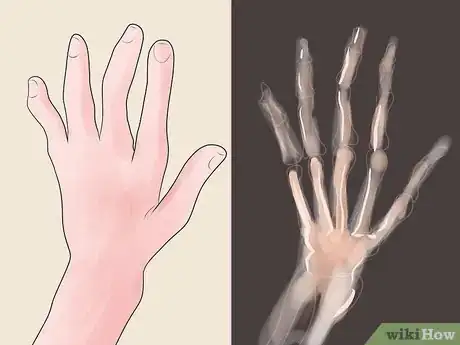
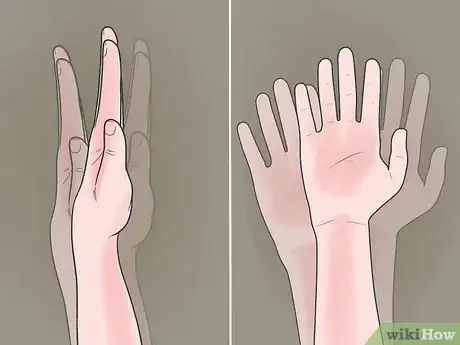
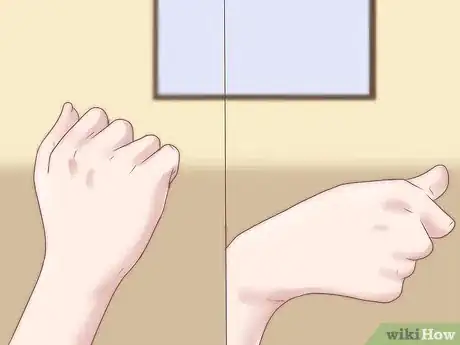





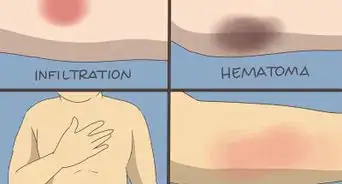



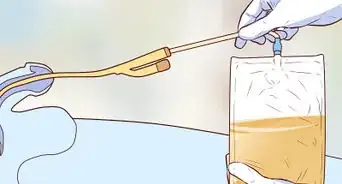
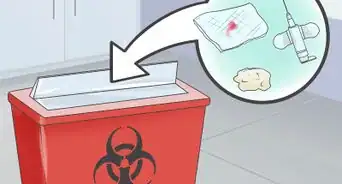








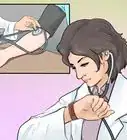





































Medical Disclaimer
The content of this article is not intended to be a substitute for professional medical advice, examination, diagnosis, or treatment. You should always contact your doctor or other qualified healthcare professional before starting, changing, or stopping any kind of health treatment.
Read More...